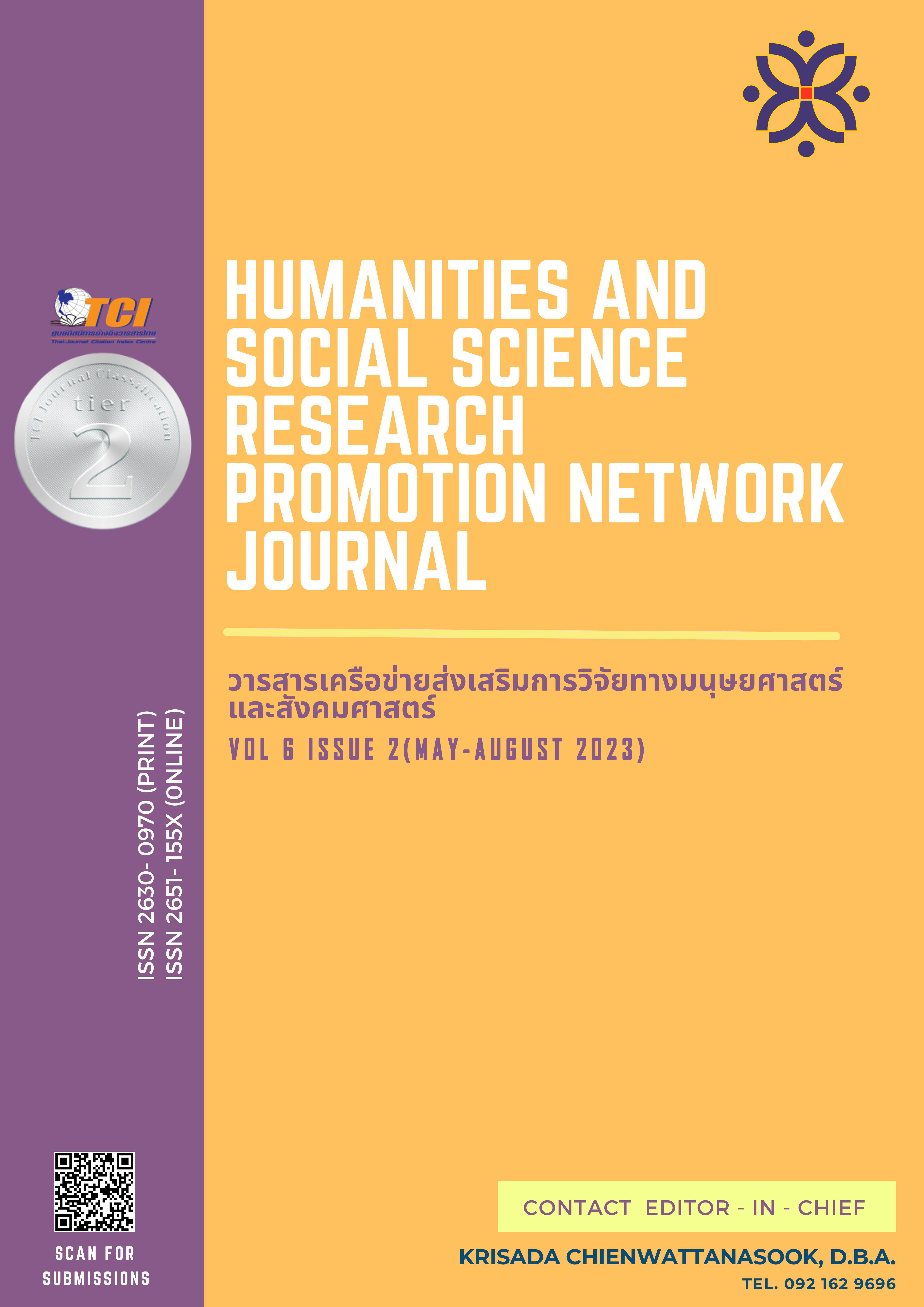นโยบายภาครัฐและวิธีการบริหารจัดการสโมสรฟุตบอลต่างประเทศที่ประสบความสำเร็จ
คำสำคัญ:
นโยบายภาครัฐ, วิธีการบริหารจัดการสโมสรฟุตบอลต่างประเทศบทคัดย่อ
บทความนี้มีวัตถุประสงค์เพื่อวิเคราะห์เกี่ยวกับแนวคิดของนโยบายภาครัฐในการสนับสนุนสโมสรฟุตบอลและวิธีการบริหารจัดการที่ประสบความสำเร็จของสโมสรฟุตบอลต่างประเทศ สรุปได้ดังนี้ การศึกษานโยบายภาครัฐจากต่างประเทศ สามารถแสดงนโยบายได้ดังต่อไปนี้ 1) การสนับสนุนการพัฒนาสิ่งอำนวยความสะดวกสำหรับนักกีฬาฟุตบอลและสนามฟุตบอล 2) การสนับสนุนการฝึกอบรมและส่งเสริมการเข้าร่วมการแข่งขันที่สูงขึ้น 3) การสนับสนุนการสร้างสถานที่กีฬาและการลงทุนในสโมสรฟุตบอลเพื่อเติบโตและเพิ่มประสิทธิภาพในการดำเนินงานของสโมสรฟุตบอล 4) การสนับสนุนการพัฒนาและการเข้าถึงของนักกีฬาฟุตบอลจากชุมชนที่มีรายได้ต่ำ 5) การสนับสนุนโครงการสร้างสนามฟุตบอลและการจัดการที่ดีขึ้นสำหรับสโมสรฟุตบอลในชุมชน 6) การสนับสนุนการพัฒนากีฬาฟุตบอลในระดับชุมชน 7) การสนับสนุนโค้ชและการพัฒนานักเตะรุ่นใหม่ และ 8) การสนับสนุนโครงการสร้างสนามฟุตบอลและการแข่งขันในระดับชาติ วิธีการบริหารจัดการสโมสรฟุตบอลต่างประเทศที่ประสบความสำเร็จ สามารถแสดงได้ดังนี้ 1) การวางแผนและกำหนดเป้าหมาย 2) การบริหารจัดการทีม 3) การตลาดและการต่อสู้ในตลาด 4) การบริหารจัดการทางการเงิน 5) การพัฒนาเทคโนโลยี 6) การจัดการสถานที่และสิ่งอำนวยความสะดวก 7) การจัดการและพัฒนาบุคลากร 8) การสร้างและส่งเสริมการตลาด 9) การสร้างและส่งเสริมภาพลักษณ์ของสโมสร 10) การพัฒนากีฬาฟุตบอลในประเทศ 11) การเตรียมความพร้อมสำหรับการแข่งขัน และ 12) การเพิ่มรายได้สโมสร
ข้อเสนอแนะการพัฒนาการบริหารจัดการสโมสรฟุตบอลในประเทศไทยและต่างประเทศมีแนวทางดังนี้ 1) การเสริมสร้างวัฒนธรรมองค์กรและความรับผิดชอบต่อสังคม 2) การพัฒนาศักยภาพบุคลากร 3) การนำเทคโนโลยีมาช่วยในการบริหารจัดการ 4) การสร้างความมั่นคงในการเงิน 5) การสร้างศักยภาพที่ดีในการจัดการ และ 6) การสร้างระบบการบริหารจัดการฟุตบอลที่มีประสิทธิภาพ
เอกสารอ้างอิง
การกีฬาแห่งประเทศไทย. (2565). แผนยุทธศาสตร์การกีฬาแห่งประเทศไทย (พ.ศ. 2565 – 2570). สืบค้นจาก https://www.sat.or.th/wp-content/uploads/2021/11/แผนยุทธศาสตร์-กกท.-พ.ศ.-2565-2570-ฉบับสมบูรณ์.pdf
โชคชัย เอี่ยมฤทธิไกร และปรางทิพย์ ยุวานนท์. (2558). รูปแบบการจัดการช่องทางการตลาดของการจำหน่ายบัตรการแข่งขันฟีฟ่าฟุตซอลโลก ประเทศไทย 2012. วารสารบัณฑิตวิทยาลัย มหาวิทยาลัยราชภัฎสวนดุสิต, 11(1), 115-123.
Brazilian Football Confederation. (2021). About the CBF. Retrieved from http//www.cbf.com.br/en/the-cbf/about-the-cbf
Chen, Y., Jin, H., Ye, J., & Wang, Y. (2018). Deep learning for sport game analysis A survey. IEEE Transactions on Multimedia, 20(4), 809-820.
Department for Culture, Media and Sport. (2023). Policy paper A sustainable future - reforming club football governance. Retrieved from https//www.gov.uk/government/publications/a-sustainable-future-reforming-club-football-governance
Faccio, M. (2016). FC Barcelona a successful model in the football industry. International Journal of Sports Marketing and Sponsorship, 17(2), 132-145.
FIFA Forward Development Programme. (2019). Guide to FIFA Forward Development Programme. Retrieved from https//digitalhub.fifa.com/m/6bf891f6a1638da9/original/FIFA-Forward-Guide-2019-EN.pdf
Forbes. (2019). The world's most valuable soccer teams 2019 At $4.1 Billion, Real Madrid tops Barcelona and Manchester United. Forbes. Retrieved from https//www.forbes.com/sites/mikeozanian/2019/07/22/the-worlds-most-valuable-soccer-teams-2019-at-41-billion-real-madrid-tops-barcelona-and-manchester-united/?sh=37da32da7e28.
Gammelsæter, H., & Senaux, B. (2016). Football and politics in Europe A critical assessment. United Kingdom:: Routledge.
Garcia, F. A., & Lopez-Ruiz, V. R. (2021). FC Barcelona and Manchester City A Comparative Analysis of Two Successful Business Models in the Football Industry. International Journal of Financial Research, 12(2), 123-134.
German Football Association. (2021). Football for all - social responsibility. Retrieved from https//www.dfb.de/en/about-dfb/social-responsibility/football-for-all/
González-Gómez, F., Picazo-Tadeo, A. J., & González-Velasco, C. (2021). The impact of good governance on football club revenue Evidence from Spanish football. Sport Management Review, 24(2), 321-333.
Grundy, T. (2004). Strategy and financial management in the football industry. Strategic Change, 13(8), 405-422.
Hatum, A., & Silvestri, L. (2019). What Makes FC Barcelona Such a Successful Business. Harvard Business Review. Retrieved from https//hbr.org/2019/05/what-makes-fc-barcelona-such-a-successful-business
Heere, B., & James, J. D. (2007). Sports teams as social entities Exploring the social psychological processes underlying fan identification and attachment. Group Dynamics Theory, Research, and Practice, 11(3), 187-201.
Horne, J., & Bleakley, D. (2013). The development of football in Japan. In Japan, Korea and the 2002 World Cup (pp. 89-105). United Kingdom: Routledge.
International Labour Organization. (2020). Football governance and the law. Retrieved from https//www.ilo.org/wcmsp5/groups/public/---ed_dialogue/---act_emp/documents/publication/wcms_735955.pdf
Japan Football Association. (2021). About JFA. Retrieved from https//www.jfa.jp/eng/about_jfa/
Jonathan Lord. (2018). Human resource management in football from. Routledge. Handbook of Football Business and Management Routledge. Retrieved from https//www.taylorfrancis.com/chapters/edit/10.4324/9781351262804-18/human-resource-management-football-jonathan-lord
Kesenne, S. (2007). The economic theory of professional team sports an analytical treatment. USA: Edward Elgar Publishing.
Kesenne, S. (2013). The economic importance of professional football clubs. In Handbook on the Economics of Professional Football (pp. 3-20). USA: Edward Elgar Publishing.
Koukiasa, M. (2011). Sustainable facilities management within event venues. Worldwide Hospitality and Tourism Themes, 3(3), 217-228.
Larsen, C. H., Alfermann, D., Henriksen, K., & Christensen, M. K. (2013). Successful talent development in soccer The characteristics of the environment. Sport, Exercise, and Performance Psychology, 2(3), 190-206.
Manoli, A. E., & kenyon, J. A. (2018). Football and marketing. IN Chadwick, S.M. ...et al. (eds.) Routledge Handbook of Football Business and Management. Abingdon: Routledge, 88-100.
Mohr, M., Nassis, G. P., Brito, J., Randers, M. B., Castagna, C., Parnell, D., & Krustrup, P. (2022). Return to elite football after the COVID-19 lockdown. Managing Sport and Leisure, 27(1-2), 166-174.
Mason, D. (1999). What is the sports product and who buys it? The marketing of professional sports leagues. European Journal of Marketing, 33(3/4), 402-419.
Samur, S.(2017). The dynamics of football club management. European Journal of Education Studies, 3(11), 848-859.
Sarmento, H., Anguera, M. T., Pereira, A., & Araújo, D. (2018). Talent identification and development in male football a systematic review. Sports Medicine, 48(9), 907-931.
Soccerex. (2021). The Future of Football Finance. Retrieved from https//www.soccerex.com/insight/articles/2021/the-future-of-football-finance
Staurowsky, E. J., & Matheson, V. A. (2014). Public Policy in Sport Management. United Kingdom: Routledge.
Taylor, D. (2019). FC Barcelona The business of a winning identity. United Kingdom: Routledge.
The Football Association. (2023). Grassroots Football. Retrieved from https//www.thefa.com/get-involved/player/grassroots
U.S. Soccer Federation (2021). About U.S. Soccer. Retrieved from https//www.ussoccer.com/about
Wilson, W. (2017). Public policy and professional sports International and Australian experiences. United Kingdom: Routledge.
Yang, G. (2011). A study of how information systems facilitate football clubs (Dissertation, University of Borås/School of Business and IT). Retrieved from https//urn.kb.se/resolve?urn=urnnbnsehbdiva-20867
ดาวน์โหลด
เผยแพร่แล้ว
รูปแบบการอ้างอิง
ฉบับ
ประเภทบทความ
สัญญาอนุญาต
ลิขสิทธิ์ (c) 2023 ศรากรณ์ อิงคเพียรกุล, ศุภสิทธิ์ เลิศบัวสิน

อนุญาตภายใต้เงื่อนไข Creative Commons Attribution-NonCommercial-NoDerivatives 4.0 International License.
บทความที่ได้รับการตีพิมพ์เป็นลิขสิทธิ์ของ ผู้เขียน
ทัศนะและความคิดเห็นที่ปรากฏในบทความในวารสารเครือข่ายส่งเสริมการวิจัยทางมนุษยศาสตร์และสังคมศาสตร์จะถือเป็นความรับผิดชอบของผู้เขียนบทความนั้น และไม่ถือเป็นทัศนะและความรับผิดชอบของกองบรรณาธิการ








